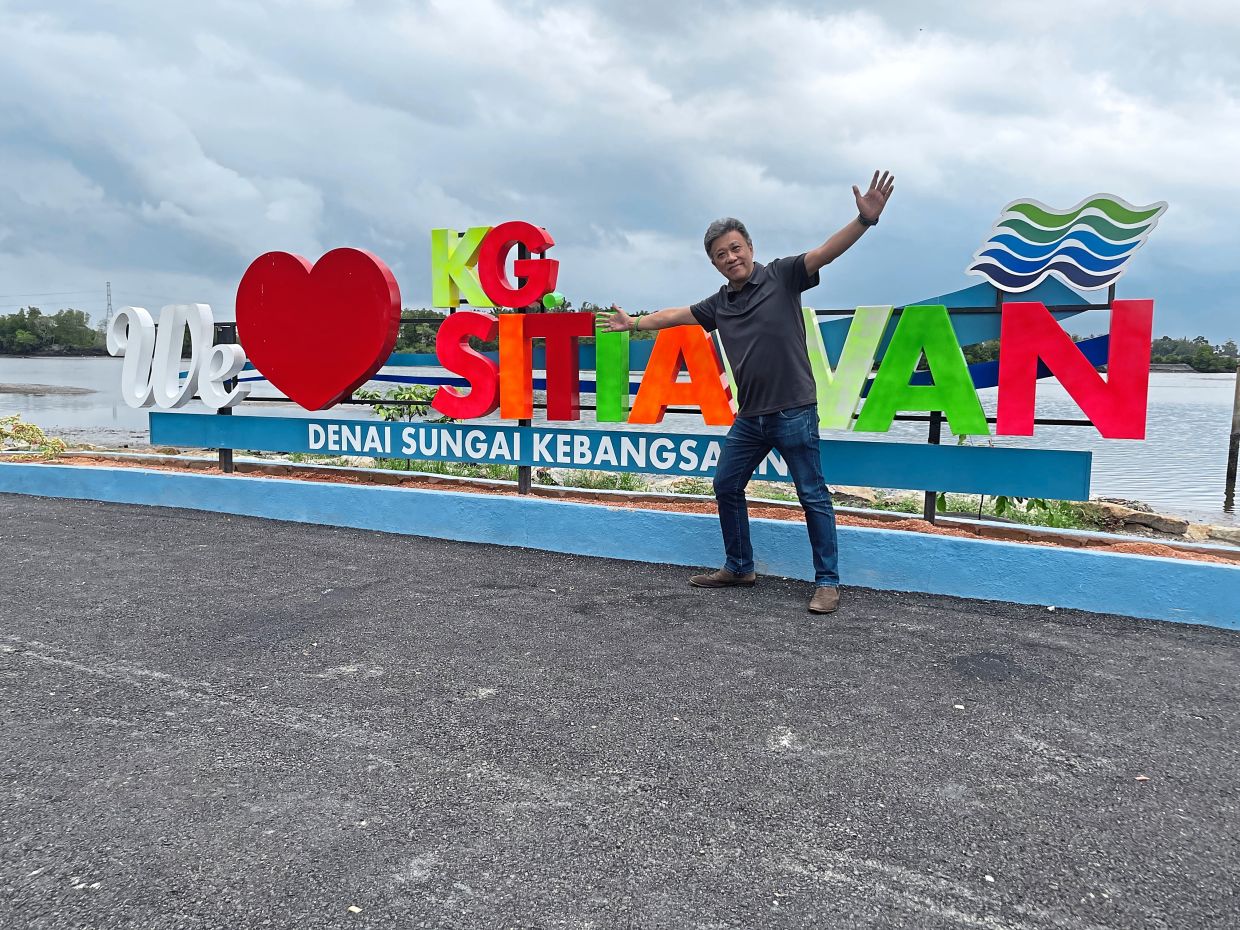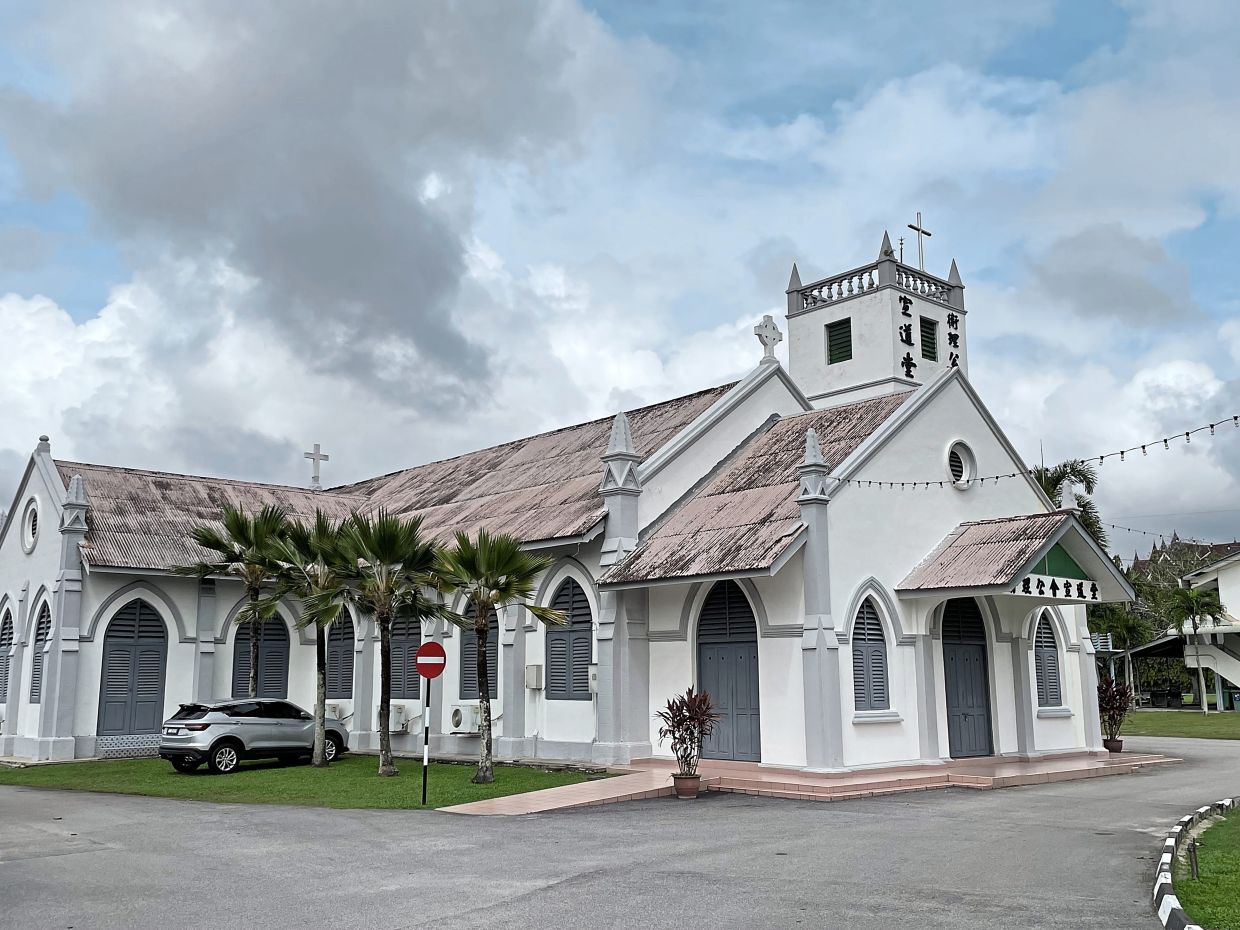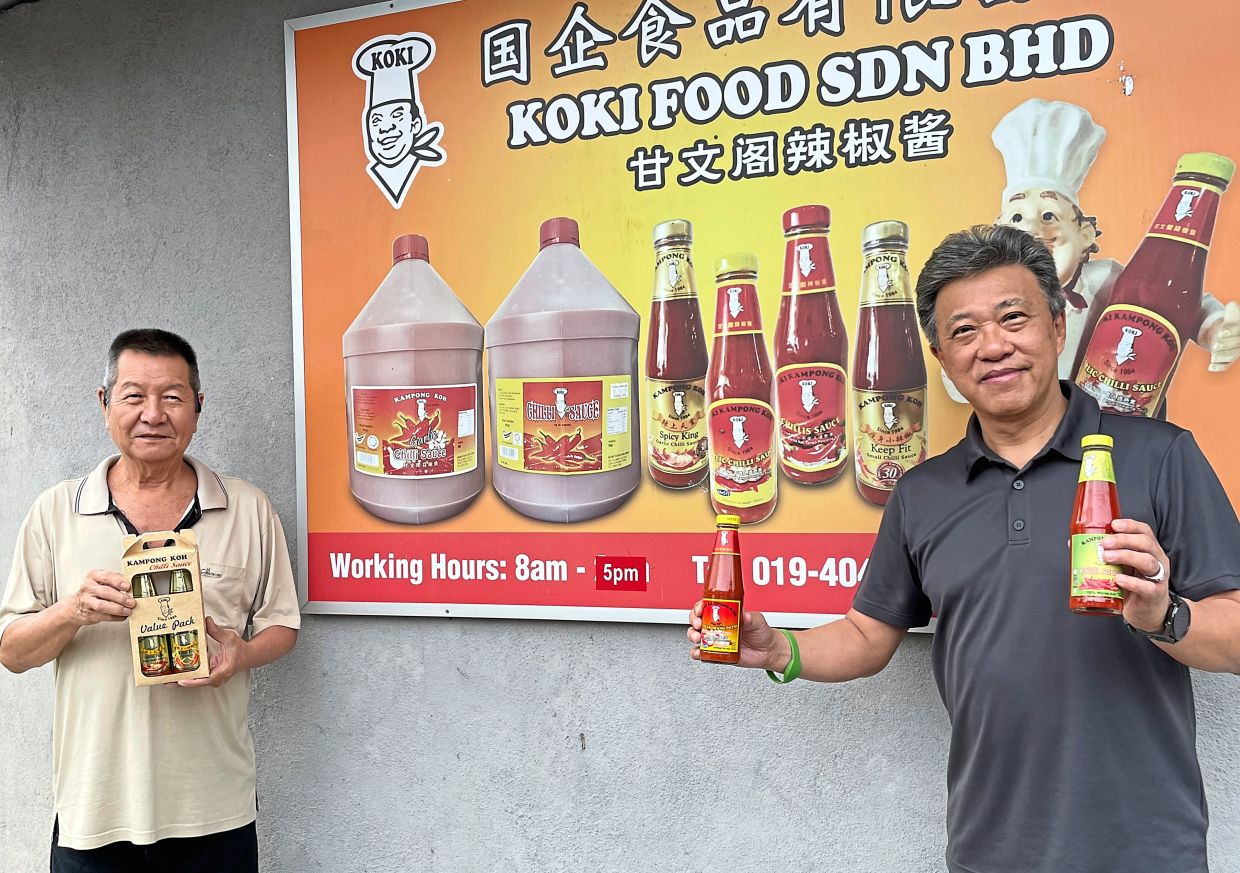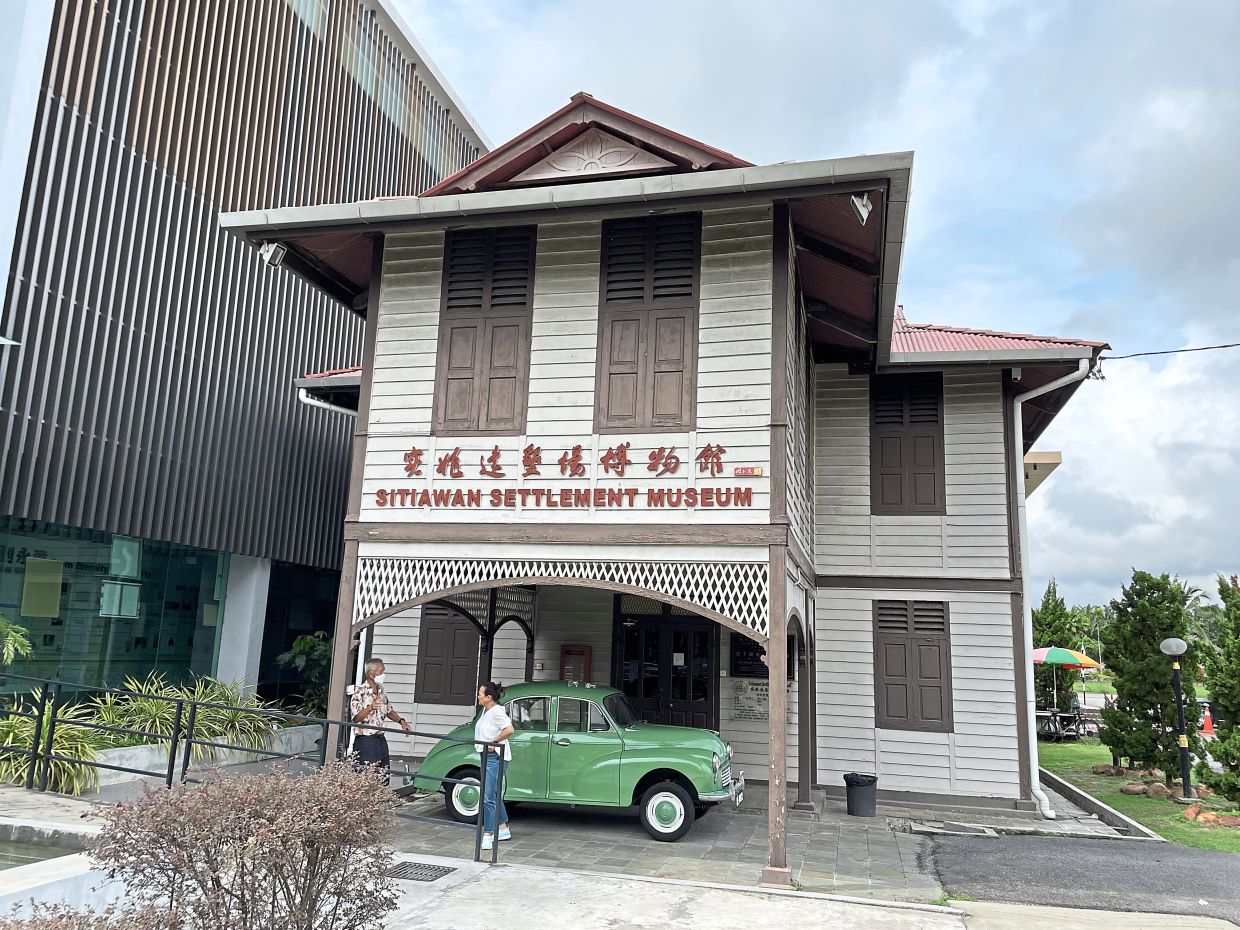
After uploading pictures of his holiday in Sitiawan on social media, the writer received plenty of comments suggesting other places he should visit there. — Photos: FLORENCE TEH
Growing up in Penang has obviously familiarised me with the stories of the early Catholic missionaries who built churches, schools, and orphanages there.
After all, I studied at St Xavier’s Institution, which, incidentally, is celebrating its 170th anniversary this year.
Next to the school is the Church of the Assumption, which was set up by the Eurasian community who followed Captain Francis Light from Phuket in Thailand to Penang in 1786.
Across the school is the Convent Light Street, which was established in 1852 by French Catholic nuns.
Down the road is St George’s Church, its completion in 1818 driven by Rev Robert Sparke Hutchings, who also founded the Penang Free School in 1816 and the Hutchings School.
The magnificent St George’s Church is the oldest purpose-built Anglican church in South-East Asia.
Despite spending over a decade in a Catholic school, I never became Christian.
None of the Christian brothers attempted to convert me, either, although I spent an inordinate amount of time praying at the SXI chapel and at Assumption – mostly to seek spiritual miracles to ensure this dummy passed his maths exams!
So, when I finally embraced Christianity 21 years ago and became a Methodist, the small coastal town of Sitiawan in Perak intrigued me.

The Pioneer Chinese Methodist Church in Sitiawan has been around since 1927.
Almost all the Protestant pastors from the church that I have met seem to come from this quaint place. More precisely, this sleepy hollow is a producer of pastors.
So finally, a few weeks ago, I took a short drive to Sitiawan from Ipoh, where I was covering the general election in Tambun.
Certainly, I had never seen so many Protestant churches, almost next to each other, in one place, but that’s no surprise.
In September 1903, Sitiawan got a spiritual boost when 360 Christian Foochow folks, desperate to escape the poverty in Fujian, a southern province in China, made their way to this place.
They settled in Kampung Koh, where the famous chilli sauce maker for dim sum is located.
The boss, Ku Sok Han, who joked he is the original “Bos Ku”, is a Methodist, too.
The British colonists, fed up with the warring Chinese groups, were happy with the church-going arrivals who shunned gambling, opium smoking, prostitution and triad activities.
They were brought to Malaya by a German Methodist missionary, Dr H.L.E. Luering, together with the first Foochow missionary, Rev Ling Ching Mi.
The duo was sent by the Methodist Episcopal Mission in China to recruit poor villagers to start a purposeful agricultural settlement in Malaya, according to website Christianity Malaysia.
“At that time, Malaya was a safe haven for the Foochow people who were escaping the heavy persecution of the Qing dynasty on Christians,” it said, adding that 484 people boarded the S.S. Glenfalloch.
But many died on the voyage, and when it arrived in St John’s Island, Singapore, for cholera quarantine, many also disappeared.
According to a thesis by Dr Khaw Sok Lee, five died on the high seas, 12 at St John’s Island due to a cholera outbreak, and 104 disappeared in the Singapore crowd or were unaccounted for.
A total of 363 people – 236 men, 72 women and 55 children – finally made it in two batches in 1903.
At Kampong Koh, wells were the main source of drinking water for the settlers.
They were encouraged by the British to plant rice, but the soil wasn’t suitable, and soon, they ventured into livestock farming and rubber plantations.
The history of the settlers has been well documented in the Sitiawan Settlement Museum, which showcases the heritage of the local Foochow community with photos and artefacts from the early days.
The museum sits in the compound of the church built by Dr Luering and Rev Ling in 1905 at a cost of $900. Sadly, the house of worship burnt down the following year. The current building dates from 1927 and is known as the Pioneer Methodist Church.
My wife and I were lucky to have a personal guided tour by Pastor Paul Ling, who was born and grew up in Sitiawan.
“My grandfather, Ling Ting Kuai, was the founder of the Trinity Methodist Church (in Pekan Gurney, Sitiawan),” he said, adding that indeed, Sitiawan has been blessed to have such a strong Christian foundation.
But there were also early non-Christian settlers, which explains the popular tourist spots of the Wat Sitawanaram Buddhist temple and the Tua Pek Kong temple, about 7km from the town centre, with its many grand temples.
Playing tourist, I queued up for 45 minutes – much to the amusement of Pastor Ling – for the famous Kong Piah biscuits.
“No one can say they went to Sitiawan unless they’ve tasted this Foochow crispy biscuit,” he said, adding that it’s made up of flour and yeast, with fillings such as minced pork, onion and sugar.
Another essential is its “mee sua”, which literally means “thread noodles”, due to its long and thin shape.

The writer (right) with Ku Sok Han, the boss of the famous dim sum chilli sauce, in Kampong Koh, Sitiawan.
This flour vermicelli in red glutinous wine with chicken meat, has a near sacred reputation in this coastal town. So, any indifferent views from this ignorant and parochial Penangite would surely not be tolerated!
After uploading pictures of my adventure in Sitiawan on my Instagram, I received many comments from my followers, suggesting that I should try the famous James Cendol, or James Muniandy, in front of the Store supermarket, but I just didn’t have the time.
So, that calls for another two-hour trip from Petaling Jaya to this place via the newly opened and time-saving West Coast Highway, and this time, it will be purely for a holiday.
Sitiawan, which continues to produce many pastors, is ironically also famous for being the home of the late Chin Peng, the head of the notorious Communist Party of Malaya.
Born Ong Boon Hua, his ancestors, too, came from Fuzhou, China, and interestingly, and in his memoir titled Chin Peng: My Side of The Story by British journalist Ian Ward, Chin Peng spoke of his childhood in Sitiawan and of his participation in the 10-boy Methodist Church choir.
He narrated about growing up in Kampung Koh, where he was enrolled in a kindergarten run by the Sitiawan Methodist Church.
He went to a tiny wooden Methodist church run by Pastor Shi Yu Shou, where he took part in singing for Christmas or Easter.
“If my life depended on it, I could still sing Yasoh ai wor – Jesus Loves Me – in Hokkien and Onward Christian Soldiers in English,” he said in the book.
His life could perhaps have been different if he had chosen a different path. But Sitiawan certainly has an interesting past as well as present, one behind its sleepy façade.
This small town could well be your destination this Christmas for a big celebration. It’s also just about 15km away from the picturesque Pangkor Island. Merry Christmas and Happy New Year.

At the Sitiawan Settlement Museum, you will find many photos and artefacts that document the history of the settlers in the area.





